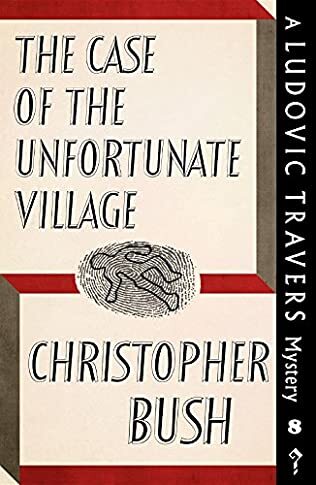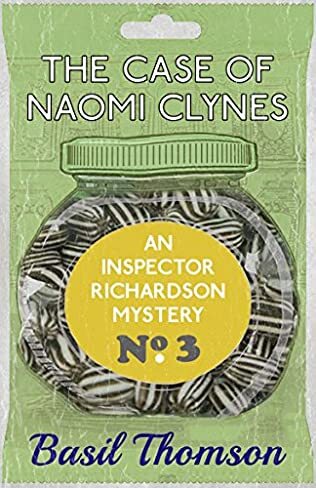Martin Fone's Blog, page 142
November 7, 2021
Christmas Dinner Of The Week

The theme of Christmas this year may be shortages, but if you cannot get your hands on a turkey or cannot afford one, help may be on hand from Heinz. They have just launched a Christmas Dinner soup which contains what they describe as “big chunks” of turkey, pigs in blankets, brussel sprouts, stuffing balls, and potatoes, all in a gravy with cranberry sauce.
In keeping with the zeitgeist, they have only produced 500 tins of the soup and, so, there is likely to be a shortage of something that is supposed to be an enterprising answer to a shortage. Heinz have indicated that if they prove popular, they will produce more of the soup next year.
It seems these days that the sunny uplands are always just beyond reach.
November 6, 2021
Diamond Of The Week

Over the last couple of years, I have been progressively going through my stuff and donating some of the more presentable items to local charity shops. It is tempting to take a ruthless approach to disposing of the junk accumulated over the years, but it can come at some cost, as this story highlights.
A woman in her seventies was having a clear out at her home in Northumberland. Amongst the costume jewellery she regarded as now being surplus to requirements, there was a piece with an enormous stone the size of a pound coin which she thought was made of cubic zirconia, a synthetic diamond lookalike. She was persuaded by a friend to get her bag of jewellery looked at by a professional valuer.
It was a good job that she did as tests on the stone revealed that it was not only a real diamond, but a 34-carat one. It is now being auctioned at the end of the month and is anticipated to fetch a cool £2 million.
That would have been the giveaway of the century.
November 5, 2021
Three Of The Gang

In the days when butter was sold unwrapped, it was always advisable to look for a follicly challenged grocer as bald-headed butter was something to be cherished. J Redding Ware defined it in his Passing English of the Victorian Era, published in 1900, as butter free from hairs. As well as selling more wholesome goods, it saved them a trip to the barber’s.
The customary sign of a barber’s shop was a standing pole, bearing red and white stripes, and two wash balls. Inevitably, a barber’s pole was slang for the male genitalia. There has always been something a little risqué about a hairdresser where gentlemen went for a trim and to pick up something for the weekend. A slang expression to describe a popular sex worker was as common as a barber’s chair in which a whole parish has sat to be trimmed. I am sure it must have been abbreviated to a barber’s chair.
Vicars were always the subject of invective through the ages. The Lexicon Balatronicum, subtitled A Dictionary of Buckish Slang from 1811, records that a Ballacks was a vulgar name for a parson. Autem was slang for a church and so an autem-bawler was a clergyman, an autem-diver a Churchwarden or a Baptist – interestingly, a term also used to describe a pickpocket who operated in a church – and an autem-goggler was a false prophet, particularly from France.
According to Jon Bee’s Slang: A Dictionary of the Turf, the Ring, the Chase, the Pit, of Bon-Ton and the Varieties of Life from 1823, a backgammon player was a fellow whose propensities lie out of the natural order of things in England. Whether those propensities included sleeping at the Inn of the Morning Star, a rather poetic piece of slang to describe the open air, is anyone’s guess.
November 4, 2021
The Case Of The Unfortunate Village

A review of The Case of the Unfortunate Village by Christopher Bush
The premise of many a murder story is a character who preens themselves with the thought that they have planned the perfect murder. Inevitably, though, they leave some loose ends and are hoist by their own petard by trying to be too clever for their own good. My immediate thought, when I had finished The Case of the Unfortunate Village, the eighth in Christopher Bush’s Ludovic Travers series from 1932 and now reissued by Dean Street Press, was that this was a case of an author being too clever for his own good. The result was the original meaning of a curate’s egg.
The story is a version of that Manichaean struggle between good and evil played out in the bucolic village of Bableigh. To emphasise the point Bush has taken a leaf out of John Bunyan’s book by giving some of the residents of the village names that indicate their profession, for example the vicar is called Parish, a sculptor Mould, or their chief points of their character, the Mesdames Faithful and Frail. Travers’ guide to the affairs of the village is a part-time poet by the name of Dryden. There are so many characters that the reader is grateful for this rather anachronistic form of assistance.
Rather like the infinitely superior Cut Throat, the genesis of the story is rooted in an actual event, reports of witchcraft blighting the Finnish village of Helsingfors the previous year and suspicions of the involvement of an Englishman. Over three months there have been several strange deaths, seemingly accidental, in the village and several of the residents have experienced a change in character. There appears to be something in the air. Is it a form of black magic?
What brings matters to a head is the death of Yeomans. It looks like suicide, but why was his dog killed and why was its corpse buried and then later thrown into Mould’s garden? What is the significance of the sudden bold display of Forget-me-nots in Mould’s previously neglected garden? Why is the sculptor creating an image of Lucifer?
Dryden is concerned about Yeoman’s death and calls on his friend, Travers, for assistance. Travers persuades him to enlist the help of John Franklin, the head of private investigations at Durangos. The pair, sometimes in tandem and often taking different approaches to the events in the village, try to make sense of the trail of unexplained occurrences and establish whether there is a common thread running through a collection of random events.
Along the way, they uncover financial fraud and an electric wireless set that initially malfunctions and then proves fatal to its owner. The tampering of bicycle brakes leads to its rider meeting his maker when he runs into a wall and a consumptive little girl falls down a well. There is a common thread running through these bizarre incidents which Travers spots and brings to a decisive finale.
Bush’s conceit is to base his book on a parable that appears in Thomas Parnell’s The Hermit and repeated, albeit with a twist, in Voltaire’s Zadig. It is unclear whether a contemporary reader of Bush’s would have any deeper insight into these works than I had, but a working knowledge of them might have made understanding what was going on a little easier. I got there in the end, thanks, in part, to Travers’ summary in the final chapter, and while I admired the ingenuity of Bush’s idea, it all seemed a little too clever by half.
It was a story worth persevering with, but Bush wrote many more satisfying stories. It is not difficult to see why this book was phenomenally rare even after publication.
November 3, 2021
The Sleeping Island

A review of The Sleeping Island by Francis Vivian
I think even his most ardent fans would be hard pressed to make a convincing case for including Arthur Ashley, who wrote under the nom de plume of Francis Vivian, amongst the doyens of the crime writers of the so-called Golden Age. However, it is undeniable that he was able to construct a solid, enjoyable story that kept his readers entertained. The Sleeping Island, the eighth outing for his police detective Inspector Knollis, originally published in 1951 and reissued by Dean Street Press, firmly falls into this category.
What holds Vivian back in part is Knollis himself. He is solid, reliable, diligent, hardworking, determined to unravel the mystery that is laid out before him, but he rather suffers from a charisma bypass, lacking that certain spark that marks out other detectives. His role is to bring some order to a set of bewildering events, and to see justice served in an as efficient and unobtrusive way as possible. Readers of the Knollis series rarely experience the sort of pyrotechnics other writers of the time delighted in.
That said, there is a different atmosphere to this story. It is one that has a rather darker edge to it and is sombre in tone, dealing with domestic violence, greed, Machiavellian plots to obtain a legacy, wartime misdemeanours, marital infidelity, and nosy neighbours. Readers of the genre are used to red herrings but here a packet of kippers prove crucial to unmasking the culprit and ensuring that justice is served.
Paul Murray is an unlikeable man. He married his wife, Brenda, for her money after her fiancé, Dennis Palmer, was drowned in a swimming accident off the island of Lampedusa, where he and Murray were stationed during the war. Life on the Mediterranean island was so quiet that the military there dubbed it the sleeping island, hence the book’s title. Within six weeks Murray had wooed and married Brenda. She still mourned the loss of Dennis, a source of constant irritation to Murray, and called their house Avalon, the island to which, according to Thomas Mallory, the mortally wounded King Arthur was taken to fall into a deep slumber until summoned to earth once more.
Murray’s military colleagues, some of whom live in the community, have always considered that there was more to Palmer’s death than met the eye, especially given the rapidity with which Murray had seized the opportunity to get his hands on Brenda’s money. Although he had a cast iron alibi, had Murray pulled off the perfect murder?
The ghost of Palmer haunts the book and the events that unfold can be seen as his return for vengeance. Brenda’s body is found face down in the lily pond in their garden. To add a touch of the macabre to the crime, their cat has been killed and mutilated too. Brenda had been considering a change to her will to cut Paul out. Had he struck to ensure that the money stayed in his hands?
Curiously, though, on the night in question Brenda had had an unusually high number of visitors, each of whom had some form of motivation for seeing her demise. Some of their behaviour was suspicious with much lurking behind bushes and listening to conversations, tampering with and hiding evidence, and laying false trails. Murray is the obvious fall guy, particularly if he had done away with Palmer, but Knollis does not see it that way.
As Knollis’ investigations proceed, he discovers another attempt at the perfect murder, this time with an unlikely suspect. The reader, I think, is invited to compare and contrast a perfect murder with a murder that the culprit thought was perfect but wasn’t, but the explanation of the Lampedusa affair was a little sketchy for my taste. Justice won out in the end in an entertaining tale, although one that did not quite reach the heights of Vivian’s middle period.
November 2, 2021
The Case Of Naomi Clynes

A review of The Case of Naomi Clynes by Basil Thomson
This is the third book in Basil Thomson’s Inspector Richardson series, originally published in 1934 and now reissued for a modern audience by Dean Street Press. It also goes by the alternative title of Inspector Richardson CID. When we first encountered Richardson in Richardson’s First Case, he was just a bobby on the beat with a knack of being in the right place at the right time and a terrier-like inquisitiveness. Here he has made a meteoric rise up the greasy pole to become an Inspector.
There is a change of tone in this story. While the first half of the book is very much in the police procedure mould, the second half sees it become more of a conventional detective story with the police in the form of Richardson working in tandem with a couple of enthusiastic amateurs, James Milson and his uncle, James Hudson. The trio follow some leads in France on what is supposed to be Richardson’s leave which eventually lead to the unravelling of the demise of Naomi Clynes.
Richardson is nothing if not thorough and no clue, no matter how small, is too insignificant not to warrant investigation. It is this obsession with the minutiae that enables him to see that the death of the eponymous Naomi, ostensibly by gassing herself in the oven in her flat, had more sinister overtones and that the French postage stamp and postmark that she had in her personal possession may hold the key to what happened to her.
Naomi was a budding authoress who had just found a publisher for her first novel. She lived a solitary life, and her acquaintances were surprised that she had considered suicide. There was a suicide note in her typewriter when her body was found, but there was a fingerprint on one of the keys that was not hers. A witness heard a male voice in Naomi’s flat at around the time that she died. Richardson found the stub of a gold-tipped cigarette in the flat – Naomi was vehemently anti-smoking – and a piece of green wool, similar to the fabric in the clothing she wore when she met her Maker, caught on a splinter on the floor, suggesting that her body had been dragged. There was also a coffee cup whose dregs contained evidence of a poison.
Instead of a tragic suicide Richardson has a murder on his hands, but who would have killed Naomi and why? Naomi discovered that her fiancé, whom she thought had been killed in the war, had not only survived but had since married a French woman. She had arranged to see him on the day of her murder. Was this significant? And what significance has a fatal train crash in France which caused Naomi’s boss to retire on the case?
In resolving these questions Richardson unearths a vein of treachery, double crossing, and financial skulduggery. Naomi’s fate was sealed by stumbling across a secret. Although the plot is not overly complicated, by the standards of the time, and there are only a couple of credible culprits, Thomson crafts an enthralling and entertaining tale. He seems to have got into his stride, moving up a gear or two from the first two books in the series.
There is an endearing sense of humanity that pervades through the latter part of the book, principally through the characters of Milsom and Hudson, which is rarely seen in books of this genre. There is also a surprising nod to modernity in the use of aeroplanes to travel back and forth to France. In part, but not completely, these features eradicate the bad taste created by the pejorative reference to Jews and the little Englander attitudes to the French. Sadly, those are part and parcel of books of that era.
An enjoyable book and I will continue to follow Inspector Richardson as his career develops.
November 1, 2021
Wedding Anniversaries

Just over half, 50.4%, of the population aged sixteen or over in England and Wales were married or in civil partnerships in 2019, according to the Office for National Statistics. While much of the focus is on the big day, around £14.7bn is spent on weddings each year, wedding anniversaries afford an opportunity to reminisce, take stock, look to the future, and celebrate. Cards and gifts are exchanged and some anniversaries bear names which act as a reminder of the type of gift that should be given.
To reach fifty years of marriage is a considerable achievement, even more so when life expectancy was much lower than now. In 18th century Germany couples who reached this milestone were given a wreath made of gold by their friends in a ceremony witnessed by a correspondent of The Belfast Newsletters, whose account appeared in its edition of October 27, 1852.
“It was usual” he wrote, “for them to be married again, and this is called the golden wedding…the priest pronounces a simple blessing…the whole ends by a dance and a supper, to which all the friends and relations of the parties are of course invited”. He also noted that “there is another custom, too, called the celebration of the “silver wedding” (silberne hochzeit), which takes place after twenty-five years of wedlock; but it is of not such universal observance”.
Counting the years was not exclusive to the Germans. The Morning Chronicle in 1825 noted that Mr and Mrs Gerred of New North Road in Exeter had, on January 25th, celebrated the sixtieth anniversary of their wedding, a rarity worthy of especial note. More mundanely, in Charles Dickens’ Nicholas Nickleby, published in 1838, the Kenwigs celebrated their eighth wedding anniversary by hosting a gathering for their friends and acquaintances. It suggests that anniversaries were marked, even if they were not major milestones.
As well as noting the Gerred’s achievement, the correspondent of The Morning Chronicle helpfully tabulated the names of the key wedding anniversaries that prevailed at the time; cotton (first), paper (second), wooden (fifth), woollen (seventh), tin (tenth), silk and fine linen (twelfth), crystal (fifteenth), china (twentieth), pearl (thirtieth), and ruby (fortieth), not forgetting silver and gold for the twenty-fifth and fiftieth respectively.
The point of controversy lay with the Diamond wedding. “Contrary to a very general misconception”, the correspondent noted trenchantly, “this requires 75 years of marital companionship”, rather than sixty as it is now. Queen Victoria’s commandeering of the name to celebrate her sixty years on the throne in 1897 cemented it in the public’s consciousness. Clearly, it was used interchangeably to refer to both the sixtieth and seventy-fifth anniversaries, despite a rear guard effort on the part of compilers of anniversary tables throughout the century. The distinction, in truth, was probably moot.
The choice of symbols reflected the development of a marriage, starting with a blank canvas (cloth and paper), before it gained more solidity (wood) and strength and flexibility (tin). Crystal and china reminded the couple of the fragility of their bonds while the radiance and value of long and happy relationship was reflected in silver. Marriages of longer duration were rarer, reflected in the choice of pearl, while the inner flame of a ruby represented the passion that remained after so many years.
By the mid-19th century, the list was extended to include coral (35th), associated with magic and protective powers, for the thirty-fifth, and sapphire (45th), whose deep blue colouring signified profound love. Platinum symbolised the seventieth while oak with its strength and powers of endurance was adopted for the eightieth.
During the twentieth century the celebration of anniversaries became increasingly commercialised, thanks in no small part to the efforts of the American Retail Jewellers Association, who, lamenting the long wait until the golden and diamond anniversaries, compiled lists of gifts, mostly jewellery of course, appropriate to each of the fifty years of marriage. These were published in 1937 and, with minor regional variations, form the lists we use today.
October 31, 2021
Hallowe’en Decorations Of The Week

Steven Novak does not hold back when it comes to Hallowe’en. He turns his garden in Dallas, Texas, into what looks to be the set for a low budget horror movie. The decorations include a wheelbarrow full of limbs, several corpses, and more gore and blood than you could shake a witch’s broom at.
There is a corpse impaled on a spike, another whose head has been crushed in a safe, and a wood chipper that spews out blood into the air and across the lawn. It took him months to find the chipper and rig it out. On the kerbside for passers by to view, there are 55-gallon drums, filled up with the shredded body parts of guests, made from mannequins filled up with parts from skeletons and packed with insulation form. Even the front door has had a makeover. It is made up to look as though it has been broken down by an axe-wielding murderer.
I shall be intrigued to see how he tops that next year.
October 30, 2021
Wedding Carriage of The Week

It was not quite the entrance they had anticipated, but Akash and Aishwarya, healthcare workers at a hospital in Chengannur in the Indian state of Kerala, made the best of what would otherwise have been a bad job.
The torrential rains, which have wreaked havoc on the state, causing flooding, landslides and at least 27 dead, left the streets surrounding the small temple where their ceremony was to be held, flooded. Unable to get there by car, they decided that the only way to get to the temple on time was to sail.
The only problem was that they did not have a boat. Showing the innovative spirit for which the Indians are renowned, they used the next best thing, a large aluminium cooking pot. Video footage shows them squeezed tightly inside the pot while two men and a photographer paddled them down the submerged street.
All’s well that ends well. They arrived safe and dry at the temple in Thalavady, which too was partially flooded, where they exchanged the floral garlands that Hindu custom demands.
Love will always find a way.
October 29, 2021
Two Of The Gang

It is an intriguing prospect. I wonder what I would get if I went to a café and ordered Adam and Eve on a raft. I would probably be met with a vacant stare, be called an Abram man, a 16th century abbreviation of the term Abraham men used to describe a beggar claiming to be a lunatic allowed out of restraint. Whether I would get my desired poached eggs on toast is questionable.
There is something appealing about being labelled an afternoon farmer, a virtuoso procrastinator. Far better that than an anythingarian, someone bland enough not to hold a decided opinion on anything.
To avoid being an Algerine, a penurious individual who persists in borrowing trifling amounts of money, you might consider a life of crime. A couple of the more recherché sidelines might be to practice angling, stealing objects from a shop window using a hooked stick, or avoirdupois laying, stealing the brass weights from a shop counter. Alternatively, you could amuse, the term given to throwing snuff into the face of your intended victim.
A life of crime as an Alsatian, a member of the London underworld, does have its own perils, not least being deemed an Anabaptist, the term given to a pickpocket has endured the judicial sentence of a ducking.
For women, there was always a life as an Ann-chovey, the term given to a female shop worker. What they probably did not want to be known as was an Athanasian wench, the term given to describe an easy lay, delightfully taken from the opening of the Athanasian Creed, “whoever desires”.
Slang seemed much more inventive in the 18th and 19th centuries.



